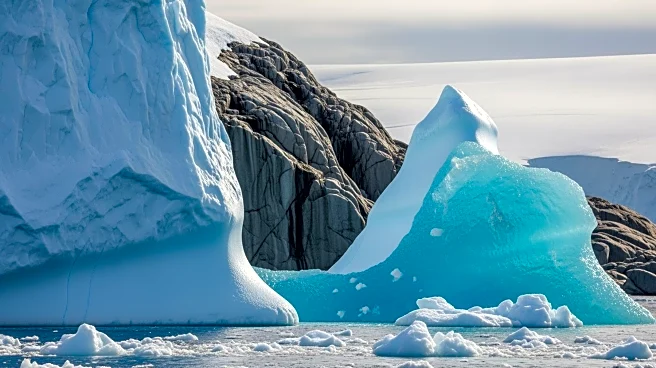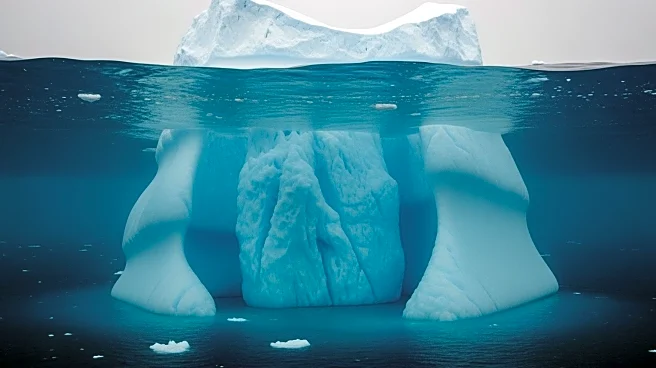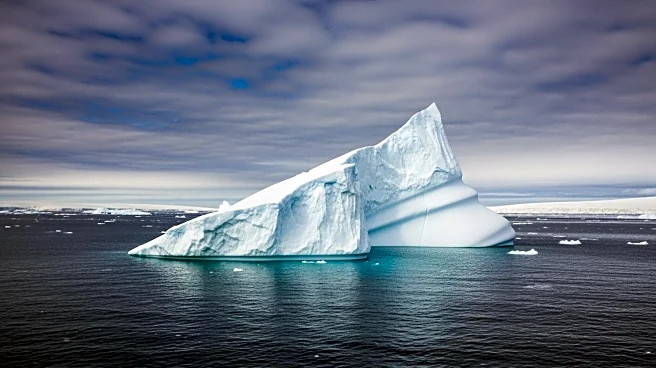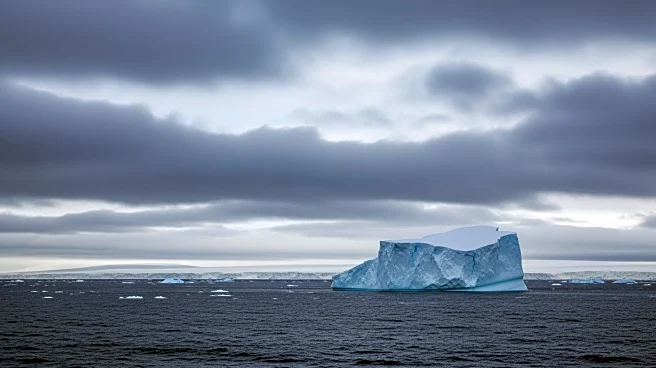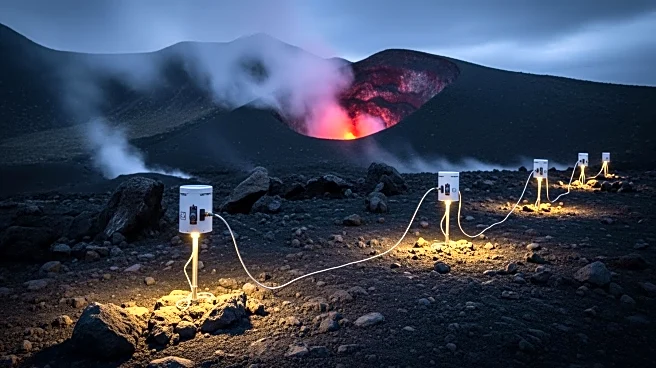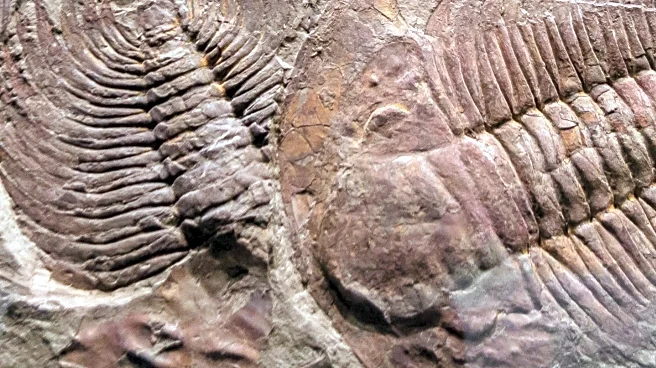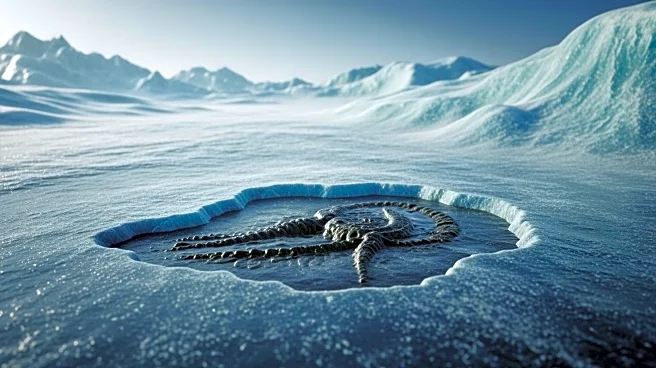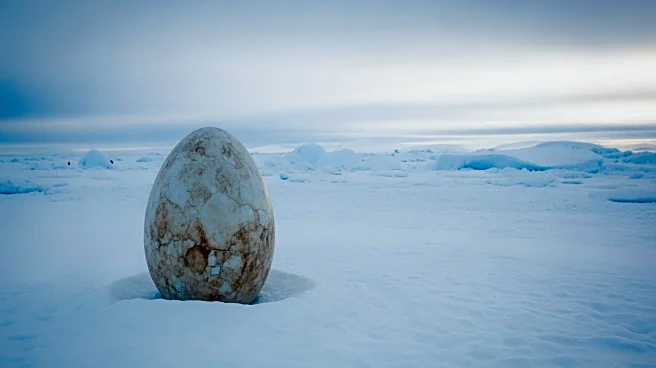What's Happening?
Researchers from the British Antarctic Survey (BAS) have discovered a vast granite body beneath the West Antarctic Ice Sheet, specifically under Pine Island Glacier. This granite formation, approximately
100 km across and 7 km thick, was identified through precise gravity measurements collected by aircraft surveys. The granite, dating back to the Jurassic period, was linked to pink granite boulders found in the Hudson Mountains. These findings provide insights into the historical behavior of the ice sheet, revealing how it plucked rocks from the bed and deposited them on the mountains when the ice was much thicker. The study, published in Communications Earth & Environment, aims to refine ice sheet models crucial for predicting future climate change impacts.
Why It's Important?
The discovery of the hidden granite beneath Pine Island Glacier is significant for understanding the geological processes affecting ice flow and meltwater drainage in Antarctica. This region has experienced rapid ice loss, contributing to global sea level rise. By improving computer models of ice flow, scientists can better predict future changes in the ice sheet and their implications for coastal populations worldwide. The research highlights the importance of integrating geology and geophysics to uncover hidden processes shaping the planet, offering vital clues for climate change projections.
What's Next?
The findings will be used to enhance computer models that project sea level rise, aiding in the development of strategies to mitigate the impact on coastal communities. Further research may focus on exploring other hidden geological formations beneath the ice sheet, providing a more comprehensive understanding of Antarctica's past and future dynamics.
Beyond the Headlines
The study underscores the importance of interdisciplinary approaches in scientific research, combining geological dating with geophysical surveys to solve longstanding puzzles. It also highlights the role of geological formations in influencing ice sheet behavior, which is crucial for refining climate models and understanding the potential consequences of climate change.
